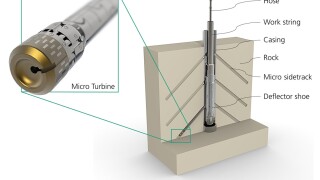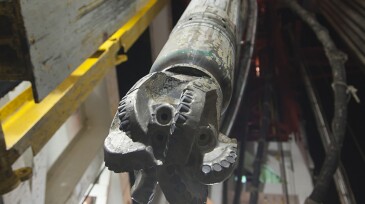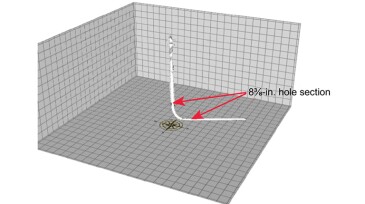Drilling
The Federal Reserve Bank of Dallas’ fourth-quarter energy survey shows that oil prices and geopolitical uncertainty are curbing enthusiasm heading into the new year.
A field test study examines micro turbine drilling in a clay formation that allows steel casing and formation to be drilled in a single operation.
The discovery in the Kutei Basin offshore Indonesia is being considered for fast-track development.
-
The French supermajor is looking to drill Lebanon's first successful exploration well by the end of next year.
-
Geosteering is supposed to ensure the wellbore stays in the most-productive zone, but a recent study suggests it often misses the mark.
-
This case study presents results achieved in Romania, Mexico, and Kuwait with the use of a series of innovations featuring integrated bottomhole assemblies. A push-the-bit system combines high-performance drilling with precise directional control.
-
The industry’s commitment to improve drilling efficiency and reduce operational costs is in full gear, yielding positive results, because of the new alignment and focus on cycle-time improvement. Holistic methodologies and solutions needed for this endeavor pose several questions that must be answered because clearer and complete pictures must be drawn for all challen…
-
This paper highlights the potential of machine learning to be used as a tool in assisting the drilling engineer in bit selection through data insights previously overlooked.
-
The authors write that simple changes in drillstring design can lead to huge savings in a climate that demands continual reductions in well-delivery time and well costs.
-
The SPE Workshop “Impact of Digitalization on Drilling Operations” began on 29 November in Al-Khobar, Saudi Arabia, welcoming 316 attendees from 17 countries and 44 companies.
-
Nabors' RZR-equipped rig has successfully drilled multiple horizontal wells in the Permian Basin.
-
The Permian Basin operator said the purchase ‘checks all the boxes’ it looks for in an acquisition.
-
Seven facilities design and public engagement principles are identified as key elements for the future oil and natural gas production facilities for the DJ Basin, and maybe even as a guide for other North American onshore shale basins.













